В этой статье мы обсудим процессы механической обработки. (превращение, фрезерование, отделка), инструменты, параметры и проблемы, связанные с обработкой алюминия и алюминиевых сплавов на станках с ЧПУ. Мы также анализируем свойства алюминия и сплавов, наиболее часто используемых при обработке на станках с ЧПУ., а также области их применения в различных отраслях промышленности..
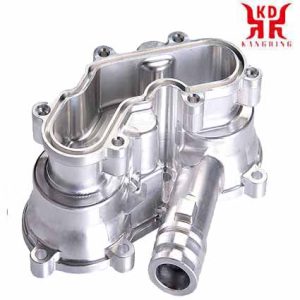
Быстрое прототипирование частей сплава алюминиевого сплава
Если вы заинтересованы в алюминии обработки с ЧПУ, Вы можете запросить цитату для ваших частей здесь.
Алюминий является одним из самых широко используемых материалов сегодня. Фактически, Алюминий превышается только сталью с точки зрения частоты использования в обработке ЧПУ. Это в основном из -за превосходной машинности алюминия.
В его чистом виде, Химический элемент алюминий мягкий, податливый, немагнитный и серебристо-белый вид. Однако, Элемент алюминий используется не только в его чистой форме. Алюминий обычно используется в сочетании с различными элементами, такими как марганца, медь и магния для производства сотни алюминиевых сплавов с различными, Значительно улучшенные свойства. Наиболее распространенные алюминиевые сплавы и их соответствующие обозначения в различных стандартах можно найти здесь.
Фигура 1: Чистый алюминий
Преимущества использования алюминия для обработанных компонентов с ЧПУ
Хотя существует много разных алюминиевых сплавов с разными свойствами, Все алюминиевые сплавы обладают одинаковыми важными свойствами.
Механизм
Алюминий может быть сформирован и обработан с использованием различных методов. Его можно быстро и легко вырезать с помощью машин для обработки, потому что он мягкий и имеет высокую механизм. Это также дешевле, чем сталь и требует меньшей обработки. Эти свойства очень полезны для оператора режущей машины и клиента. Кроме того, Алюминий менее деформирован во время обработки из -за его высокой механизма. Это приводит к более высокой точности, Поскольку машины ЧПУ могут достичь более высоких допусков.
Соотношение силы к весу
Плотность алюминия составляет около трети плотности стали. Так алюминий относительно легкий. Несмотря на свой низкий вес, алюминий очень сильный. Эта комбинация высокой прочности и низкого веса описывается соотношением силы к весу. Его высокое отношение к весу делает алюминий выгодным материалом для компонентов в различных промышленных секторах, такие как автомобильная и аэрокосмическая промышленность.
Коррозионная стойкость
Алюминий устойчив к царапинам и коррозии в типичных морских и атмосферных условиях. Эти свойства могут быть улучшены путем анодирования. Это следует отметить, однако, эта коррозионная стойкость зависит от типа алюминия. Однако, Наиболее распространенные типы алюминия, используемые в обработке ЧПУ, имеют самое высокое сопротивление.
Поведение при низких температурах
Большинство материалов, как правило, теряют некоторые из своих полезных свойств при температуре ниже нуля. Например, И углеродная сталь, и резина становятся хрупкими при низких температурах. В отличие, Алюминий остается мягким, податливый и сильный даже при очень низких температурах.
Электрическая проводимость
Электрическая проводимость чистого алюминия при комнатной температуре 36.7 миллион сименс на метр. Хотя алюминиевые сплавы могут иметь более низкую проводимость, чем чистый алюминий, Они достаточно проводящие, чтобы их можно было использовать в качестве электрических компонентов. С другой стороны, Алюминий не подходит, если высокая электропроводность изготовленного компонента нежелательна.
Переработка
Поскольку обработка с ЧПУ является производительным процессом подтронного производства, Много чипсов, и поэтому во время обработки происходит много материалов.. Алюминий хорошо подходит для переработки, то есть. относительно небольшая энергия, усилия и затраты необходимы для переработки алюминия. Это также делает его выгодным материалом с точки зрения предотвращения отходов материалов. Это также делает алюминий более экологически чистым материалом в обработке ЧПУ.
Анодирование
Процесс анодирования - это процесс отделки поверхности, который улучшает устойчивость к износу и коррозионную стойкость материала. Алюминий подходит для анодирования процесса. Этот процесс также облегчает окрашивание изготовленных алюминиевых компонентов.
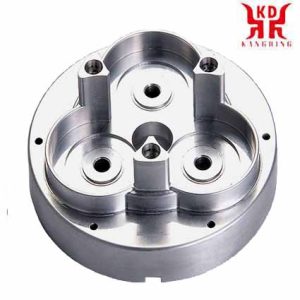
Фрезерование алюминиевых деталей на станке с ЧПУ.
Популярные алюминиевые сплавы для обработки ЧПУ
В нашем опыте, следующее 5 Типы алюминия чаще всего используются в обработке ЧПУ.
И ов 2007
Альтернативные имена: 3.1645; В 573-3; Alcu4pbmgmn.
Этот алюминиевый сплав содержит медь в качестве основного легирующего элемента (4-5% медь). Это короткий сплав, который легкий, долговечный, Высоко функциональный и обладает теми же механическими свойствами, что и AW 2030. Это также подходит для резки резьбы, термическая обработка и высокоскоростная обработка. Все эти свойства делают en aw 2007 широко используемый материал при изготовлении компонентов, болты, винты, ореховой, заклепки и резьбовые стержни. Однако, Этот тип алюминия имеет плохую сварку и коррозионную стойкость; Поэтому рекомендуется использовать защитное анодирование после изготовления компонента.
И ов 5083
Альтернативные имена: 3.3547; Сплав 5083; В 573-3; США A95083; ASTM B209; Almg4.5mn0.7
А - 5083 известен своим превосходным выступлением в суровых условиях. Он содержит магний и следы хрома и марганца. Этот сорт имеет очень высокую устойчивость к коррозии в химической и морской среде. А - 5080 имеет самую высокую силу из всех не обработанных сплавов.; свойство, которое он получает даже после сварки. В то время как этот сплав не следует использовать для приложений с температурой выше 65 °С, Он имеет отличную производительность в низкотемпературных приложениях.
Из -за его диапазона полезных свойств, А - 5080 используется для широкого спектра применений, включая криогенные системы, Морские приложения, Системы давления, химические применения, сварные сооружения и тела транспортных средств.
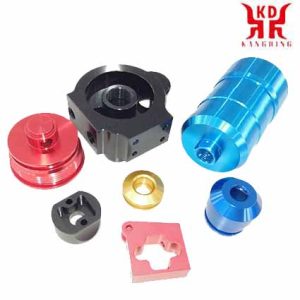
Поверхностная отделка деталей алюминиевого сплава
И ов 5754
Альтернативные имена: 3.3535; Сплав 5754; В 573-3; U21NS A95754; ASTM б 209; Аль-мг3.
В качестве алюминиевого магностию материал для замесителя с самым высоким процентом алюминия, А - 5754 может быть свернут, поддельный и экструдированный. Это не подлежит термообработке и может быть холодным, чтобы увеличить прочность за счет формируемости. Кроме того, Этот сплав превосходен по коррозионной стойкости и имеет высокую прочность. С этими свойствами, Неудивительно, что aw 5754 является одним из наиболее широко используемых типов алюминия в обработке ЧПУ. Это обычно используется в сварных структурах, полы, Рыбацкое снаряжение, Транспортные тела, заклепки, и в пищевой обработке.
И ов 6061
Альтернативные имена: 3.3206; Iso 6361; США A96060; ASTM б 221; Almgsi0.5
Это кованый сплав, содержащий магний и кремний. Он подлежит тепло и имеет среднюю прочность, Хорошая сварка и хорошая формируемость. Кроме того, у него очень высокая коррозионная стойкость; свойство, которое можно улучшить путем анодирования. И ов 6060 широко используется в строительстве, Продовольственная обработка, Медицинские технологии и автомобильные технологии.
И ов 7075
Альтернативные имена: 3.4365; США A96082; H30; Al-Zn6mgcu.
Основным сплавным элементом этого типа алюминия является цинк. Хотя en aw 7075 имеет среднюю механизм, плохое простудное свойства и не подходят для сварки или пайки, Он имеет высокое соотношение прочности к весу, Отличная устойчивость к атмосферной и морской среде, и прочность, сравнимая с некоторыми стальными сплавами. Этот сплав используется в очень широком спектре приложений – от подвесных планеров, Велосипедные рамки, Водооборудование и оружие для строительства производственных инструментов.
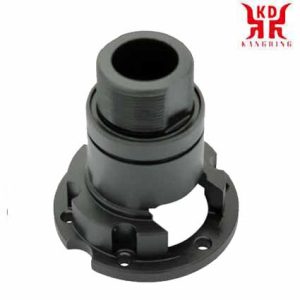
Повернутые части алюминиевого сплава
Процесс обработки с ЧПУ для алюминия
Алюминий может быть обработан с использованием многих процессов ЧПУ, доступных сегодня. Мы перечислили некоторые из этих процедур:
Поворот
В процессах обработки ЧПУ, Заготовка вращается, в то время как одноточечный режущий инструмент остается неподвижным вдоль своей оси. В зависимости от используемой машины, Либо заготовка, либо режущий инструмент выполняет движение подачи, чтобы удалить материал.
Узнайте больше о наших услугах по поворотам с ЧПУ.
Фрезерование
Процессы фрезерования являются наиболее часто используемыми методами при обработке алюминиевых компонентов. Эти методы состоят из вращения многоочетного режущего инструмента вдоль его оси, в то время как заготовка остается неподвижной вдоль собственной оси. Режущее действие и последующее удаление материала достигаются путем перемещения подачи заготовки или режущего инструмента, или комбинация обоих. Это движение может проходить вдоль нескольких топов.
Узнайте больше о наших сервисах с ЧПУ..
Карманное измельчение
Карманное измельчение, также известный как карман, это метод фрезерного точки с ЧПУ, в котором полый карман прорезится в компонент.
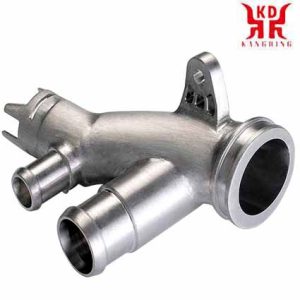
Обработка ЧПУ алюминиевого сплава
Поволование лица и фрезерование лица
В обработке машины, лицом к лицу / Фрезерование-это создание плоской площади поперечного сечения на поверхности заготовки, поворачивая / фрезерование.
Бурение
Бурение - это процесс создания отверстия в заготовке. В этом процессе, Многоточечный вращающийся режущий инструмент определенного размера движется по прямой линии, перпендикулярная поверхности для обработки, Эффективное создание дыры.
Инструменты для обработки алюминия
Многие различные факторы играют роль при выборе инструментов для обработки ЧПУ.
Дизайн инструмента
Различные геометрические аспекты инструмента способствуют эффективности с точки зрения обработки алюминия. Одним из них является количество режущих краев. Чтобы избежать трудностей с удалением чипов на высоких скоростях, Режущие инструменты для алюминиевой обработки с ЧПУ должны иметь 2-3 режущие края. Более высокое количество режущих краев приводит к меньшим чипсовым отсекам. Это заставляет застрять большие чипсы алюминиевых сплавов. Когда силы резки низкие, а эвакуация чипа является серьезной проблемой процесса, Следует использовать два режущих края. Три режущих края могут быть использованы для идеального баланса между эвакуацией чипа и прочностью инструмента.
Угол спирали
Угол спирали - это угол между центральной линией инструмента и прямой касательной линией вдоль режущей кромки. В то время как высокий угол спирали быстро удаляет чипсы, Это также увеличивает трение и генерацию тепла во время обработки. Это может привести к сварке чипсов на поверхность инструмента во время высокоскоростной обработки ЧПУ алюминия. Меньший угол спирали приводит к меньшему тепла, Но это может не удалось эффективно удалить чипсы. При обработке алюминия, Угол скостного 35 ° или 40 ° подходит для грубых применений, в то время как угол 45 ° подходит для отделки.
Угол зазора
Угол клиренса является еще одним важным фактором для правильной функции инструмента. Чрезмерно большой угол приведет к тому, что инструмент выпадает в компонент и гремел вперед и назад. С другой стороны, слишком маленькие углы могут привести к высоким трениям между инструментом и заготовкой. Углы очистки между 6 ° и 10 ° особенно подходят для обработки алюминия с ЧПУ.
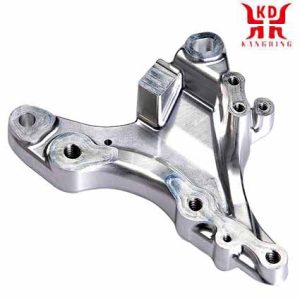
Алюминиевое литье
Инструментальный материал
Карбид вольфрама является предпочтительным материалом для режущих инструментов, используемых в алюминиевой обработке ЧПУ. Поскольку алюминий очень мягкий и легко разрезать, Решающим фактором в режущем инструменте для алюминия является не твердость, но способность получить островного края бритвы. Эта способность присутствует в цементированных карбидных инструментах и зависит от двух факторов, размер цементированного карбида и доля связующего. В то время как больший размер зерна приводит к более сложному материалу, меньший размер зерна гарантирует более жесткий, более устойчивый. Меньшие зерна требуют кобальта для достижения тонкой структуры зерна и прочности материала.
Однако, Кобальт реагирует с алюминием при высоких температурах и образует встроенный край из алюминия на поверхности инструмента. Ключ должен использовать цементированный карбид инструмент с нужным количеством кобальта (2-20%) Чтобы минимизировать эту реакцию при сохранении требуемой силы. Инструменты карбида вольфрама, как правило, лучше подходят для выдержания высоких скоростей обработки алюминия ЧПУ, чем стальные инструменты. В дополнение к материалу инструмента, Покрытие инструмента является важным фактором в эффективности резки инструмента.
Зерно (Нитрид циркония), Тиб2 (Титан борид) А алмазные покрытия являются одними из подходящих инструментов для обработки с ЧПУ алюминия.
Подает и скорость
Скорость резки - это скорость, с которой вращается режущий инструмент. Поскольку алюминий может противостоять очень высокой скорости резки, Скорость резки для алюминиевых сплавов зависит от пределов применения используемой машины. Как и в случае с алюминиевой обработкой ЧПУ, скорость должна быть максимально высокой, По мере того, как это снижает риск встроенных краев, экономит время, минимизирует повышение температуры в компоненте, Улучшает разбивание чипов и улучшает отделку поверхности. Точная рабочая скорость зависит от алюминиевого сплава и диаметра инструмента.
Корм - это расстояние, которое заготовка или инструмент перемещается в соответствии с революцией инструмента. Используемая скорость подачи зависит от желаемой отделки поверхности, сила и жесткость заготовки. Грубые порезы требуют корма 0.15 к 2.03 мм / преподобный, В то время как отделка для операций требует корма 0.05 к 0.15 мм / преподобный.
Охлаждающая смазка
Несмотря на свою хорошую механизм, Алюминий никогда не должен быть высушенным, так как это способствует формированию встроенных краев. Подходящие охлаждающие смазочные материалы для алюминиевой обработки с ЧПУ - растворимые масляные эмульсии и минеральные масла. Избегайте охлаждающих смазочных материалов, содержащих хлор или активную серу, Как эти элементы маризуют алюминий. Вы можете узнать больше о охлаждающих смазках здесь.
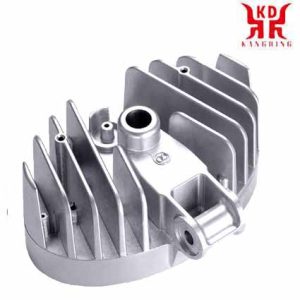
Алюминиевый сплав с ЧПУ
Процессы после обработки
После обработки алюминиевой части, Существуют определенные процессы, которые могут быть проведены для улучшения физического, механические и эстетические свойства части. Наиболее распространенные методы перечислены ниже.
Жемчужный взрыв – сжатый воздушный взрыв с твердым абразивом
Bead Bulting - это процесс отделки для эстетических целей. В этом процессе, Производимый компонент взорван сильной струей сжатого воздуха и крошечных стеклянных шариков, который эффективно удаляет материал и обеспечивает гладкую поверхность. Он дает алюминием атласную или матовую поверхность. Наиболее важными параметрами процесса для взрывной обработки шариков являются размер стеклянных шариков и прочность используемого давления воздуха. Используйте эту процедуру только тогда, когда размерные допуски детали не являются критическими.
Другие процессы отделки - полировка и рисование.
Покрытие
В этом процессе, Алюминиевая заготовка покрыта другим материалом, Например, цинк, никель или хром. Это сделано для улучшения функциональности компонента и может быть достигнуто с помощью электрохимических процессов.
Анодирование
Процесс анодирования - это электрохимический процесс, в котором алюминиевая заготовка помещается в раствор серной кислоты. Затем между анодом и катодом подается электрическое напряжение. Этот процесс преобразует обнаженные поверхности заготовки в электрически нереактивное покрытие оксида алюминия. Плотность и толщина покрытия зависят от состава раствора, Продолжительность процесса анодирования и применяемый электрический ток. Анодирование также можно использовать для окрашивания компонента.

Алюминиевый профиль
Порошковое покрытие
В процессе порошкового покрытия, Компонент покрыт цветным полимерным порошком с использованием электростатического распылительного пистолета. Затем часть вылечивается при температуре 200 °С. Порошковое покрытие улучшает прочность и сопротивление износу, коррозия и воздействие.
Термическая обработка
Компоненты, изготовленные из термообработанных алюминиевых сплавов, могут быть подвергнуты термообработке для улучшения их механических свойств.
Применение алюминиевых компонентов, производимых ЧПУ, в промышленности
Как упомянуто выше, Алюминиевые сплавы имеют ряд выгодных свойств. Вот почему алюминиевые компоненты, производимые с ЧПУ, являются незаменимыми во многих отраслях промышленности, включая:
Аэрокосмическая: Из-за высокого соотношения прочности к весу, Многие авиационные фитинги сделаны из алюминия.
Автомобильная промышленность: Подобно аэрокосмической промышленности, Многие компоненты, такие как оси и другие компоненты, сделаны из алюминия.
Электроника: Из -за их высокой электрической проводимости, Алюминиевые компоненты с ЧПУ часто используются в качестве электрических компонентов в электрических устройствах.
Продовольственная и фармацевтическая промышленность: Поскольку алюминий не реагирует с большинством органических веществ, Алюминиевые компоненты играют важную роль в пищевой и фармацевтической промышленности.
Спорт: Алюминий широко используется для создания спортивного оборудования, такого как бейсбольные биты и свистки.
Низкотемпературная технология: Из -за способности алюминия сохранять свои механические свойства даже при температурах ниже нуля, Алюминиевые компоненты часто используются в низкотемпературных приложениях.
 English
English العربية
العربية 中文(漢字)
中文(漢字) Čeština
Čeština Dansk
Dansk Nederlands
Nederlands Suomi
Suomi Français
Français Deutsch
Deutsch Italiano
Italiano 日本語
日本語 ಕನ್ನಡ
ಕನ್ನಡ 한국어
한국어 Português
Português Русский
Русский Slovenčina
Slovenčina Español
Español Svenska
Svenska Türkçe
Türkçe

